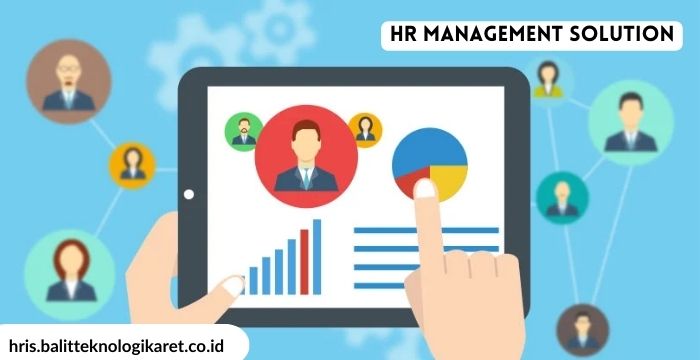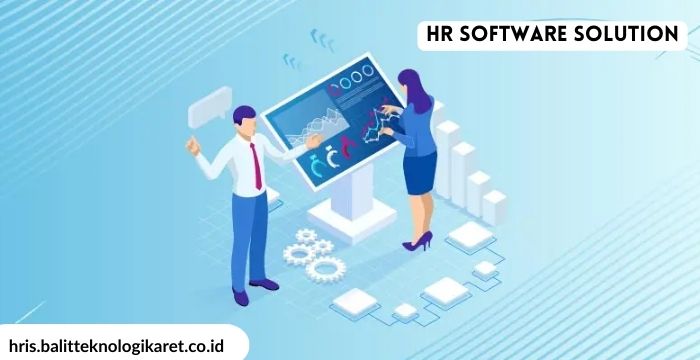Introduction
hris.balitteknologikaret.co.id | Healthcare ERP – The healthcare industry is a complex and multifaceted sector, where efficiency, accuracy, and data-driven decision-making are paramount. In the pursuit of operational excellence, many healthcare organizations have turned to Enterprise Resource Planning (ERP) systems to transform their operations. In this extensive guide, we will explore the world of Healthcare ERP, uncovering its significance, key features, benefits, challenges, and the ways in which it is reshaping the landscape of healthcare management.

Chapter 1: Navigating the Landscape of Healthcare
Before diving into the realm of Healthcare ERP, it is crucial to understand the unique dynamics and challenges of the healthcare industry.
1.1 The Diversity of Healthcare
The healthcare industry encompasses a vast array of organizations and functions, including hospitals, clinics, pharmacies, laboratories, and more. Each of these segments has its own set of processes and requirements.
1.2 Challenges in Healthcare
The healthcare sector faces an array of challenges, including strict regulatory compliance, patient safety concerns, and the need for efficient resource management. These challenges have spurred the adoption of ERP solutions tailored for the healthcare sector.
Chapter 2: Healthcare ERP – The Digital Transformation
Healthcare ERP is a comprehensive software solution designed to optimize healthcare operations. Let’s explore its key features and capabilities.
2.1 Key Features of Healthcare ERP
Healthcare ERP systems offer a range of features tailored to the unique needs of the industry, including:
- Patient Management: Efficiently manage patient records, appointments, and treatment histories.
- Inventory Control: Optimize the management of medical supplies, pharmaceuticals, and equipment to reduce waste and improve availability.
- Electronic Health Records (EHR): Maintain digital health records, improving accessibility and accuracy while ensuring patient privacy and data security.
- Billing and Claims Management: Streamline financial processes, from billing patients to managing insurance claims.
- Scheduling and Resource Allocation: Optimize staff schedules and allocate resources efficiently to enhance patient care.
2.2 Customization for Healthcare Needs
Healthcare ERP systems are highly customizable to adapt to the specific requirements of different healthcare organizations, ensuring alignment with their unique processes and challenges.
Chapter 3: The Significance of Healthcare ERP
Healthcare ERP brings significant benefits to the healthcare sector. Let’s explore why this integration is pivotal for healthcare organizations.
3.1 Enhanced Patient Care
Healthcare ERP enhances patient care by streamlining administrative processes, reducing wait times, and ensuring access to accurate patient information.
3.2 Improved Data Management
By digitizing health records and automating data entry, healthcare organizations can maintain more accurate and accessible patient information.
3.3 Regulatory Compliance
Healthcare ERP systems facilitate adherence to regulatory requirements and data privacy laws, reducing the risk of non-compliance.
3.4 Efficient Resource Allocation
Efficient allocation of resources, from staff to medical supplies, results in cost savings and improved patient outcomes.
3.5 Financial Management
Streamlined billing, claims management, and financial reporting contribute to more efficient financial operations within healthcare organizations.
Chapter 4: Benefits of Healthcare ERP Integration
The integration of Healthcare ERP systems offers numerous advantages to healthcare organizations. Let’s explore these benefits in detail.
4.1 Enhanced Patient Care
Healthcare ERP systems reduce administrative burdens, allowing healthcare professionals to focus more on patient care.
4.2 Accurate and Accessible Patient Information
Digital health records are easily accessible, ensuring that healthcare providers have real-time access to accurate patient data.
4.3 Regulatory Compliance
Compliance with healthcare regulations and data privacy laws is simplified, reducing the risk of legal complications.
4.4 Efficient Resource Allocation
Efficient resource allocation optimizes staff schedules and ensures that medical supplies are readily available when needed.
4.5 Financial Management
Streamlined billing and claims management processes contribute to more efficient financial operations and cost savings.
4.6 Data-Driven Decision-Making
Access to comprehensive data empowers healthcare organizations to make informed, data-driven decisions, enhancing overall operational efficiency.
Chapter 5: Challenges in Implementing Healthcare ERP
While the benefits of Healthcare ERP integration are substantial, the process comes with its challenges. Let’s explore common hurdles and strategies to overcome them.
5.1 Data Security
Challenge: Protecting sensitive patient data is of paramount importance, considering the potential legal and ethical implications. Solution: Implement robust data security measures, including encryption and access controls, to safeguard critical patient information.
5.2 Regulatory Compliance
Challenge: Adhering to healthcare regulations and data privacy laws can be complex and demanding. Solution: Work closely with compliance experts to ensure that the Healthcare ERP system aligns with regulatory requirements.
5.3 User Adoption
Challenge: Getting healthcare professionals and staff to adapt to the new system can be a challenge. Solution: Invest in comprehensive training programs to ensure a smooth transition and user proficiency.
5.4 Data Migration
Challenge: Migrating existing patient data to the integrated system can be complex and time-consuming. Solution: Plan and execute data migration meticulously, ensuring data accuracy and minimizing downtime.
5.5 Customization
Challenge: Different healthcare organizations have unique processes and requirements, necessitating extensive customization. Solution: Collaborate closely with Healthcare ERP experts to tailor the system to specific organizational needs.
Chapter 6: Implementing Healthcare ERP
A successful implementation of Healthcare ERP requires a systematic approach. Here is a step-by-step guide for the implementation process.
6.1 Needs Assessment
Begin by assessing the specific needs and objectives of your healthcare organization for the integration. Understand the unique requirements and challenges of your organization’s healthcare processes.
6.2 Vendor Selection
Choose an ERP vendor with expertise in Healthcare ERP and features that align with the requirements of your healthcare organization.
6.3 Data Preparation
Clean and prepare patient data for migration and integration. This step is crucial to ensure data accuracy and integrity.
6.4 Employee Training
Invest in comprehensive training programs to familiarize healthcare professionals and staff with the new Healthcare ERP system, ensuring a smoother transition.
6.5 Testing
Thoroughly test the system before going live to identify and resolve any issues or discrepancies.
6.6 Go-Live
Execute the implementation and go live with the integrated Healthcare ERP system. Monitor the system closely in the initial stages to address any emerging issues.
6.7 Post-Implementation
After the system is live, continue to monitor its performance and gather feedback from users. This will help fine-tune and optimize the system for ongoing efficiency.
Chapter 7: Future Trends in Healthcare ERP
The future of Healthcare ERP holds exciting possibilities. Here are some trends to watch for:
7.1 Telemedicine Integration
The integration of telemedicine capabilities into Healthcare ERP systems will enable remote patient care and consultations, expanding healthcare access.
7.2 Artificial Intelligence (AI)
AI will play an increasingly significant role in Healthcare ERP, offering advanced analytics, automation of repetitive tasks, and predictive capabilities.
7.3 Blockchain Integration
The integration of blockchain technology will enhance the security, transparency, and traceability of patient data and healthcare transactions.
7.4 Population Health Management
Healthcare ERP systems will increasingly focus on population health management, helping healthcare organizations track and manage the health of entire populations.
7.5 Advanced Analytics
Healthcare ERP systems will offer more advanced analytics features, allowing healthcare organizations to gain deeper insights from patient data and make data-driven decisions.
Conclusion
Healthcare ERP integration is reshaping the healthcare industry. By understanding its significance, key features, benefits, challenges, and the implementation process, healthcare organizations can harness the full potential of these systems to enhance patient care, maintain data security, and drive success in a dynamic and demanding healthcare landscape. While challenges exist, they can be addressed with careful planning, expert guidance, and a commitment to healthcare excellence. As the healthcare industry continues to evolve, Healthcare ERP is poised to play a central role in transforming the way organizations manage patient data, enhance healthcare delivery, and ensure regulatory compliance.


